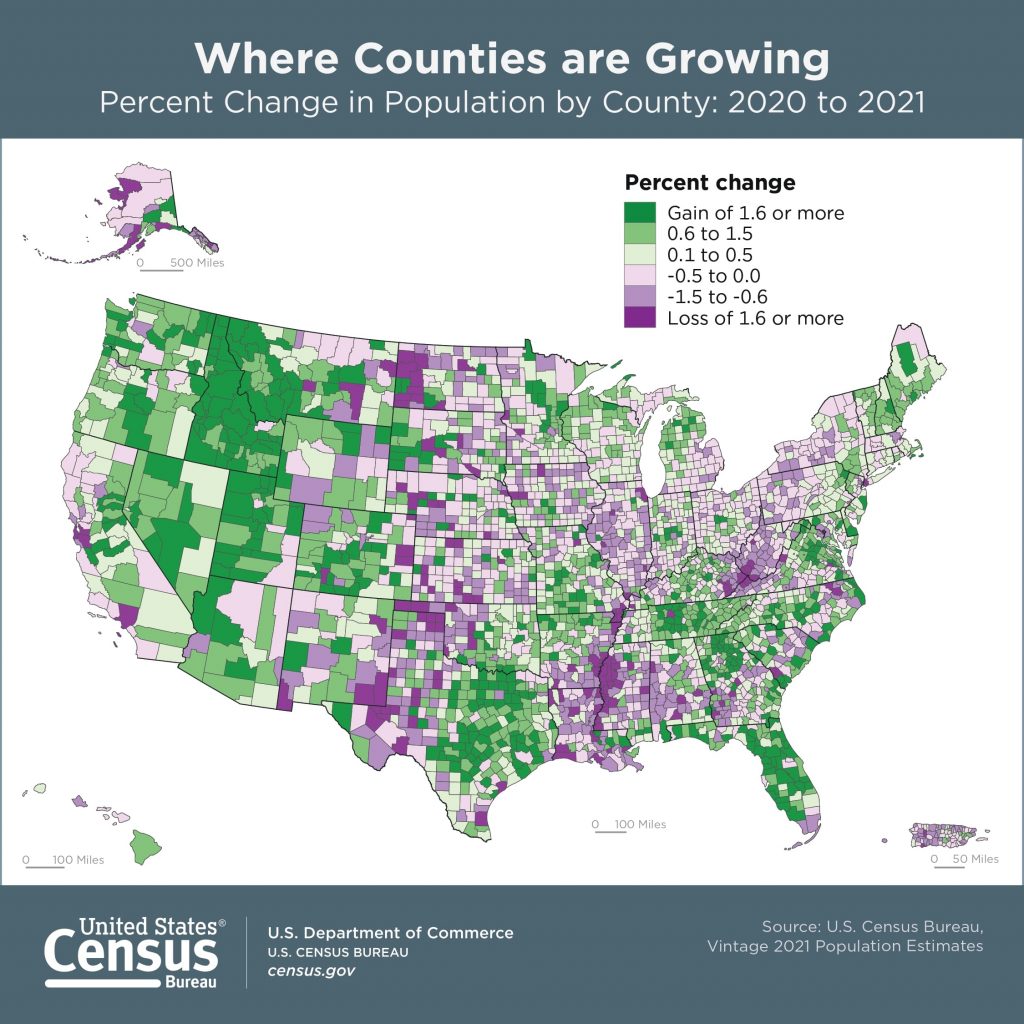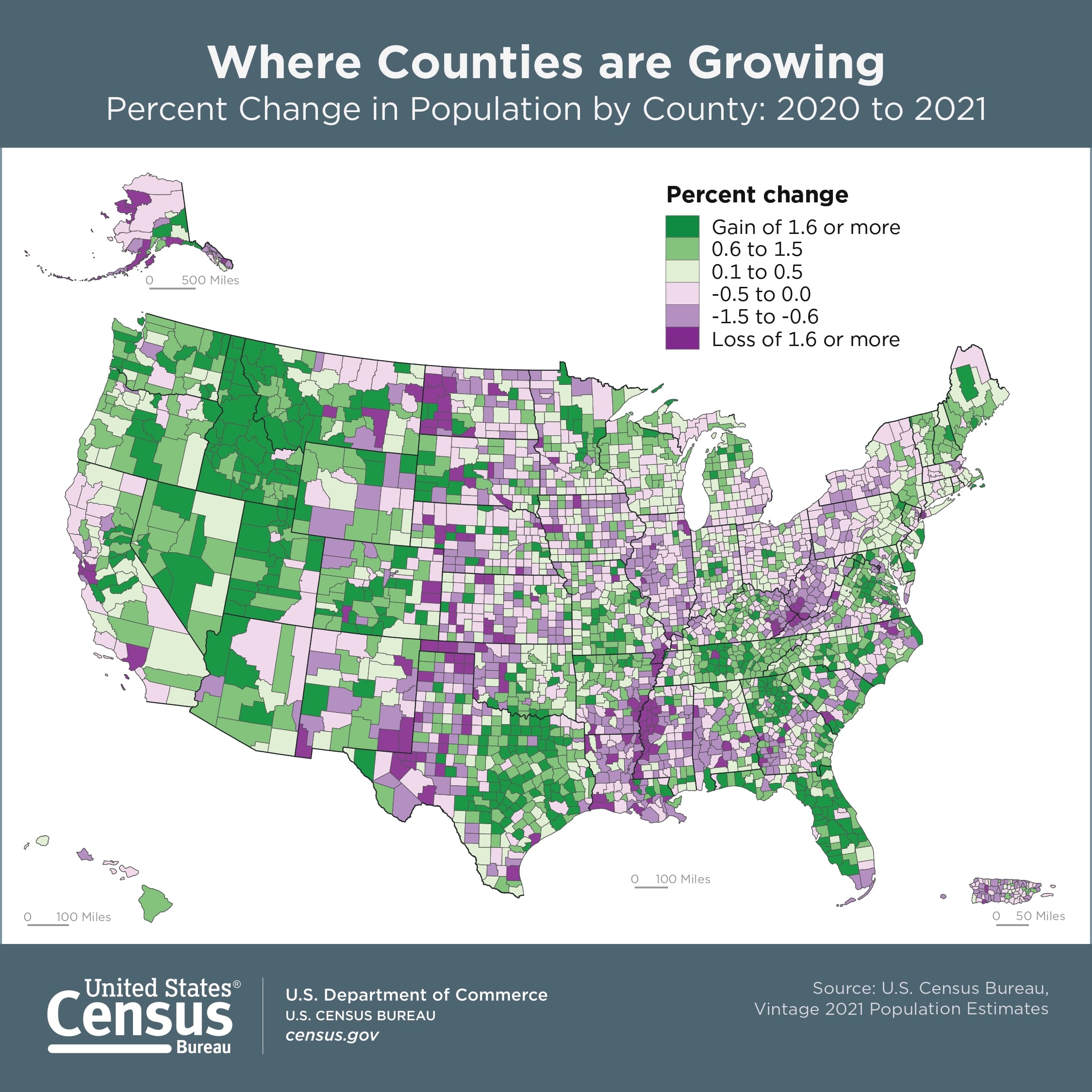 Brittany Berg
Brittany Berg
SVP, Global Pre-Sales & Product
You’ve probably noticed demographic changes in your area over the last couple of years—a significant reduction or growth in population. According to the U.S. Census Bureau’s 2020-2022 analysis, the United States experienced one its largest demographics shifts ever while in the throes of the COVID-19 pandemic. And it’s not over yet.
Much of the change involves individuals moving out of large metropolitan areas. The reasons are varied. Some folks moved out of densely populated areas to protect their health. Others moved to avoid the city’s strict COVID-related rules and procedures. Others, no longer tied to a physical locale and the need to show up somewhere for work, seized the chance to work remotely—closer to family, or nature, or better weather, or what have you.
This shift has created challenges for many retailers, including a struggle for in-store talent. However, retail’s key challenge resulting from a change in demographics involves identifying, and taking advantage of, the new, localized shopper preferences.
Winning retailers realize they need to be perceptive and agile in this ever-changing environment, so they’re able to quickly pivot in response to changes in demand. We think the best way to do that is to invest in advanced AI and machine learning demand-forecasting platforms and embedded solutions.
Statistical Forecasting
Utilizing an advanced statistical forecasting engine enables you to sense and shape demand. As sales actualize at various levels of the hierarchy—such as style and color, subclass, department, and location—the Impact Analytics forecasting engine retunes and refines its modeling parameters to re-forecast demand. This is then consumed in the end-to-end assortment management process.
Advanced Clustering and Assortment Planning
Many retailers adopted an annual or semi-annual approach to clustering. Those static days are long gone. The ability to more frequently re-cluster and re-optimize your assortments, in a more granular fashion, enables retailers to notice when localized customer behaviors drift away from an assortment plan created 12-18 months ago based on supplier and product development requirements.
Better Allocation and Replenishment
Allocation is that final step in a fashion item’s journey when you get to react to trends; replenishment is that steady flow for your core products. To minimize lost sales, it’s critical that you re-forecast demand, and adjust model inputs and parameters, on a weekly or biweekly timeframe. Marry that with various other inputs, business rules, and optimizations to enable final decision making and execution.
Price Optimization
With residents moving from metropolitan cities to more rural areas and suburbs, thus bringing different expectations that bend the curve, successful retailers are also leveraging the power of an IA-driven platform to model and quickly adapt to new price elasticities.
Take the Next Step
Want to learn more about how Impact Analytics AI-powered demand forecasting enables you to meet customer demand by outsmarting demographic changes? Just click below!





